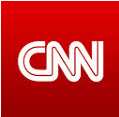In keeping with my recent series exploring how to see Christianity from the margins, Notre Dame’s near-celebrity theologian, Candida Moss, writes a few interesting “both/and” details about the debated origins of the Christian Easter idea.

Note how Moss includes pagan influences and the concept of uniqueness on the feast–and its underlying theology–in her discussion, though neither are made the sole contributors to Easter’s early development.
Did Christians really ‘steal’ Easter?
Opinion by Candida Moss, special to CNN
(CNN) – It’s that time of year again: the time when chocolate comes in pastels, cherry blossoms start to bloom and well-marketed religion exposés are released to the world.
In other words, it’s Easter.
Among the rash of sensationalist stories we can expect through the season, the annual “Easter was stolen from the pagans” refrain has sprouted again just in time for Holy Week.
Don’t believe the hype.
Perhaps most misinformed theory that rolls around the Internet this time of year is that Easter was originally a celebration of the ancient Near Eastern fertility goddess Ishtar.
This idea is grounded in the shared concept of new life and similar-sounding words Easter/Ishtar. There’s no linguistic connection, however. Ishtar is Akkadian and Easter is likely to be Anglo-Saxon.
Just because words in different languages sound the same doesn’t mean they are related. In Swedish, the word “kiss” means urine.
But the biggest issue for Christians is the claim that Jesus’ resurrection – the faith’s central tenet – might have pagan roots.
Even apart from whether or not Jesus actually rose from the dead, many Christians claim that the very idea is unique.
There are other biblical examples of people being raised from the dead – think of Jesus raising Lazarus. But those people went on to die again. Only Jesus was raised from the dead to live forever.
But there’s a problem: Pre-Christian religions are replete with dying and rising gods.
- Dionysius, most commonly thought of as the Greek god of wine, is one such example. He was lured to his death by the Titans, who then boiled and ate him. He was revived by his grandmother, and from his ashes humanity was formed, the Greeks believed.
- Farther afield, Osiris – an Egyptian god-king who became ruler of the realm of the dead – was slaughtered before being brought back to life by Isis.
- A similar story is found in the case of the Greek goddess Persephone, the daughter of the harvest goddess Demeter. Persephone was carried off to the underworld by the love-struck Hades. Because she ate pomegranate seeds in the underworld, she was permitted to leave only for six months a year.
- Her annual resurrection is a metaphor for the changing of the seasons, and many scholars think that stories about dying and rising deities are essentially explanations for the coming of winter.
- Then there’s Mithras, an ancient Iranian deity popular among Roman soldiers.
- Among the many claims made about Mithras are that he was born on December 25, that adherents to his cult practiced baptism, and that he died and was resurrected.
- The connections between Christ and Mithras are further amplified by the fact that the church of St. Clement, near the Colosseum in Rome, is built on top of an ancient Mithraeum.
The list goes on, and I’ll admit it’s a bit unsettling.
That’s why the accusations that Christians “stole” the Resurrection from the Pagans is so popular and rhetorically powerful.
If, as many Christians claim, Christianity’s against-the-odds success is in some way proof of its authenticity and truth, then what does it say that parts of its truth were stolen from religious movements that no longer exist?
Spiritual “Manifest Destiny” looks less persuasive when extinct religious traditions supplied the backbone for the modern-day Church.
But there are ways around some of these problems.
Lumping all of these stories of dying and rising gods into a single category obscures important differences between them. Some of those who rose as gods, for example, were mere human beings prior to their return. Jesus, in contrast, was divine before his death, according to Christian theology.
Also, some of the parallels between the traditions come from a later period (post-Christianity) or are completely unsubstantiated. The arguments about Mithras and Jesus, for example, have completely fallen apart in the past 50 years because there simply isn’t enough ancient evidence to support them.
We should also ask whether the fishermen who followed Jesus around Palestine would have known about (much less adopted) stories from ancient Egyptians and Babylonians.
Greek and Roman mythology circulated widely on coins, but would the followers of Jesus who first claimed that Jesus was resurrected have known these stories in great detail?
Perhaps, perhaps not.
On the other hand, many Christians claim that Jesus’ death and resurrection is subtly different from that of other ancient deities and, thus, that the resurrection of Jesus was a wholly new idea.
The problem is, these apologists are one archeological discovery away from disaster. In the meantime, they are trying to pry Christianity apart from other late antique religions in order to protect it.
Perhaps the real problem here is with the idea of uniqueness.
As the University of Chicago scholar Jonathan Z. Smith showed, there’s a huge ideological and religious investment in the idea that Jesus was unique.
But there doesn’t have to be. Just because one idea is influenced by another idea doesn’t mean that its meaning is determined by the chronologically prior idea.
The Founding Fathers may have been influenced by Greek classical tradition, but this doesn’t mean that we should interpret the Constitution in light of Aristotle. You can recognize both the importance and innovation of the Constitution and its roots in ancient European civics.
Rather than battening down the hatches and looking for other signs of uniqueness, Christians need to think about how meaning relates to tradition.
Christians didn’t steal Easter, but it probably wasn’t a wholly new idea, either.





